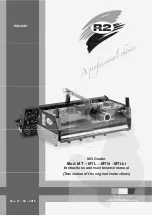
7
QUICK START GUIDE
CB-1450 DATA BUOY PLATFORM
2091 Exchange Court
Fairborn, Ohio 45324
937-426-2703
www.NexSens.com
Mooring Configurations
This section contains only general information on
the available mooring options for CB-1450 data
buoys. To develop an effective mooring strategy,
a variety of application-specific criteria (water
level fluctuations, currents and wave action,
debris loads, etc.) must be thoroughly reviewed
prior to deployment. NexSens does not endorse
any particular mooring strategy for any specific
application.
Single-Point Mooring
Single-point moorings are used in calm waters
when monitoring sensors are attached to the
instrument cage or housed in deployment pipes.
The sensors are thus protected and less
vulnerable to damage caused by subsurface
debris, high currents, and entanglement from
anchor lines.
In a single-point configuration, a stainless steel
mooring line connects the buoy directly to a
bottom chain and anchor. At normal pool/stage,
the mooring line should be taut, with most of the
bottom chain resting on the floor of the water
body. As the water level increases and the buoy
rises, the bottom chain is lifted from the floor.
Figure 14:
Typical Single-Point Mooring Configuration
Two-Point Mooring
Two-point moorings are commonly used when
monitoring sensors are deployed in the water
column below the buoy. In this setup, the
mooring lines are pulled taut away from the
buoy, freeing the water column for a suspended
sensor line.
In most two-point configurations, mooring lines
connect the data buoy to small marine marker
floats, often located on the water surface. These
marker floats are shackled to another mooring
line that runs to the floor and connects to a
bottom chain and anchor assembly. Additional
subsurface marker floats may also be used in
some applications. As in single-point systems,
the bottom chain prevents buoy submersion as
the water level fluctuates.
Figure 15:
Typical Two-Point Mooring Configuration


























